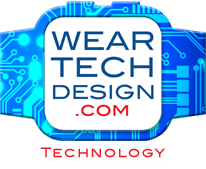OEM Secrets Test
Once as simple as walking or running step counter – or pedometer – wearable devices have become more advanced – or smart – seemingly overnight. From vibration-from-speech generating vests for the deaf to Google Glass to advanced fitness activity trackers to night vision equipment and even heads-up imaging displays, wearable devices have become a part of the mainstream consumer, military, and industrial markets. A “wearable” can be defined as a product that is worn by the user for an extended period of time and in some way, enhances the user’s experience as a result of the product being worn. A “smart” wearable adds connectivity and independent data processing capability to the device. Wearables are divided into four application sub-categories: fitness/wellness (activity monitors, fitness bands, foot pods and heart rate monitors), infotainment (smart glasses/goggles, smart watches and imaging devices), military (night vision equipment, heads-up displays, exo-skeletons and smart clothing), and industrial (body-worn terminals) [Source: IHS Electronics and Media, 2013]. These categories have different market forces driving their adoption rates. For the military, it’s the desire to improve situational awareness, maps/routes, combat efficiency and save lives. For industrial, the main drivers are improving production line efficiency and tracking capability. For infotainment, it’s the continually exploding gaming market with cutting edge imaging and virtual reality, as well as the increasing number of devices able to connect wirelessly to smartphones to become part of the “internet of things” (IoT). Finally, for the wellness and medical segments, the key driving forces include: rising life expectancy, curtailing escalating medical and insurance costs, the desire to prolong a healthy life and to reduce hospital stays.
Bio-Stats for Wellness
Bio-stats are vital signs that measure the human body’s basic functions. These include body temperature, pulse/heart rate, respiratory rate and blood pressure. These are critical because an adverse change in vital(s) may indicate a decline in health, and vice-versa. Hospitals and doctor’s offices are obviously well-equipped with expensive devices to measure these bio-stats. But, imagine how much more quality-of-life could be improved if these bio-stats could be efficiently and inexpensively measured outside the medical arena. For example, in the home or at work, lifestyle and behavior modifications could be made real-time “on-the-fly”, improving health and possibly extending or even saving lives. Fortunately, a combination of device cost reductions and advanced sensor technology has improved to the point where the proliferation of medical and wellness smart wearables is increasing. These include simpler “single vital sign” units that attach to the body, to more sophisticated full-body sensor-filled exo-skeletons. But, from an integrated circuit (IC) electronics standpoint, partitioning and efficiently powering these types of wearables is not trivial. To further understand this, next let’s take a look “under the hood” of a typical smart wearable device.
Typical Smart Wearable Device
What makes a typical smart wearable device function? Well, one could think of it as a miniature embedded system. The exact partitioning would obviously depend on the device itself; however, generally speaking, the core architecture of a smart wearable is a combination of the following:
- • a microprocessor or microcontroller or similar IC
- • some sort of micro-electromechanical sensors (MEMS)
- • small mechanical actuators
- • Global Positioning System (GPS) IC
- • Bluetooth/cellular/Wi-Fi connectivity to collect/process and sync data
- • imaging electronics, LEDs
- • computing resources
- • rechargeable or primary cell (non-rechargeable) battery or battery pack
- • support electronics.
A wearable unit’s primary design goals are usually to have a compact form factor, low weight for wearability/comfort and possess ultralow energy consumption to extend battery run time/life. However, powering these devices efficiently and accurately with minimal current draw is not so simple. Some of the key issues associated with powering smart wearables include the following:
- 1) Low current consumption from the power management IC in a battery-powered device is paramount for increased run time. A micropower or a nano power conversion IC is necessary.
- 2) A MEMS sensor requires power from a quiet regulated power source. Busy actuators may also benefit. An LDO or low-ripple switching regulator is ideal for such rails since they have low output noise.
- 3) Bluetooth/RF/Wi-Fi/cellular connectivity system rails also require low noise. A low dropout regulator or, since output currents can be high, an LDO post-regulated switching regulator or a low-ripple switching regulator are an excellent choice.
- 4) Processor power (the “brains” of the wearable). From ARM Cortex MCUs, DSPs, GPS chips or FPGAs need a variety of low-voltage rails, spanning a gamut of currents. These can be powered by LDOs or switching regulators.
- 5) Since not all wearable devices are powered with rechargeable batteries – some may utilize primary cell (non-rechargeable) batteries that need to have long run times between replacements. Therefore, finding a way to estimate battery run time is key.
- 6) Compact size and low weight make the wearable device more comfortable for the user. ICs in compact packages provide small solution footprints, thus enabling the device to have both offered in a small form factor and be lightweight.




